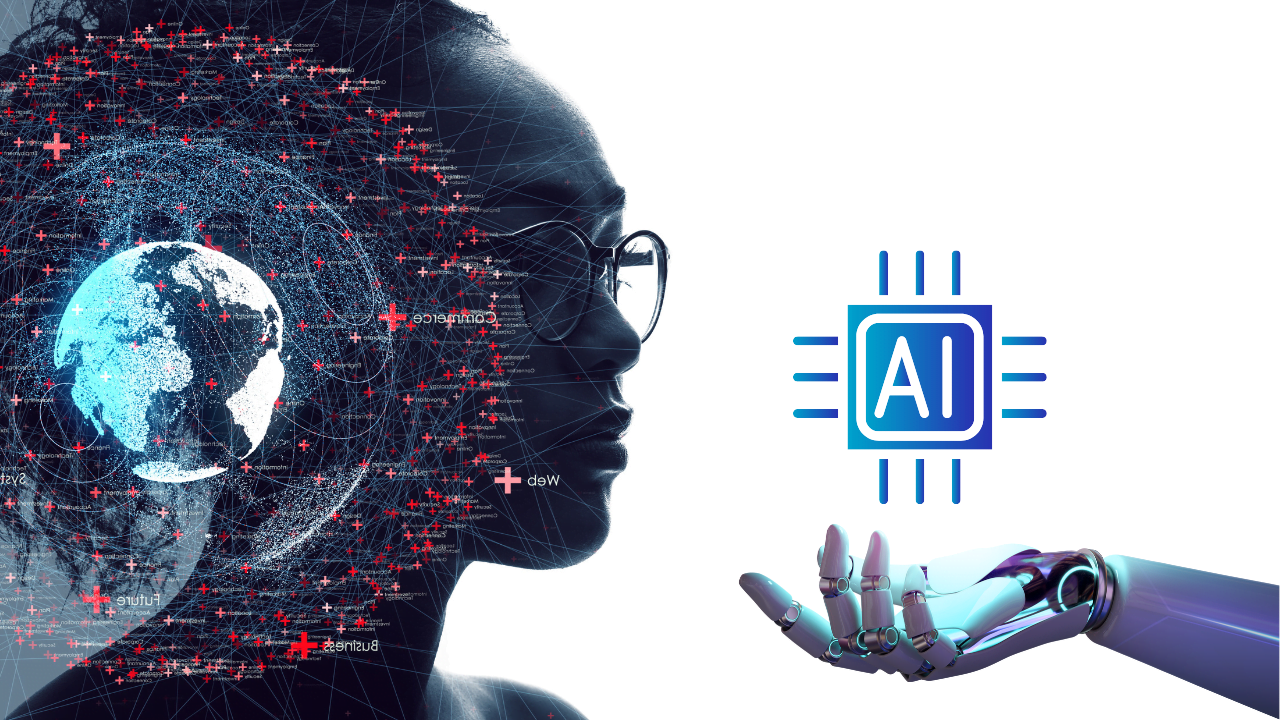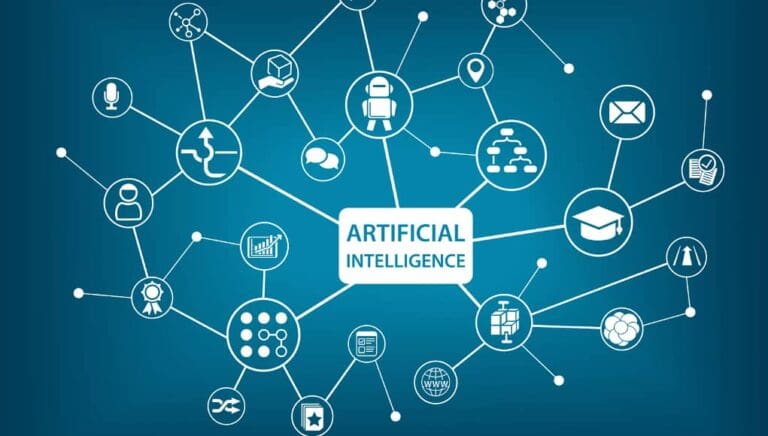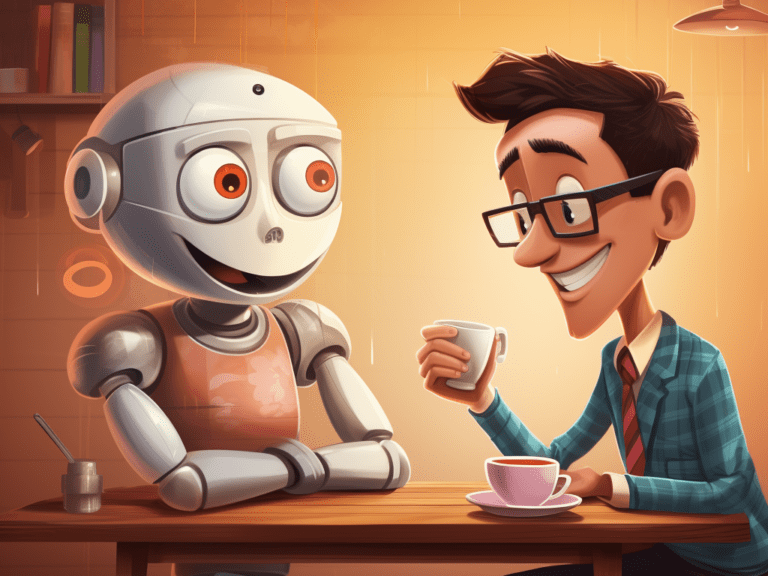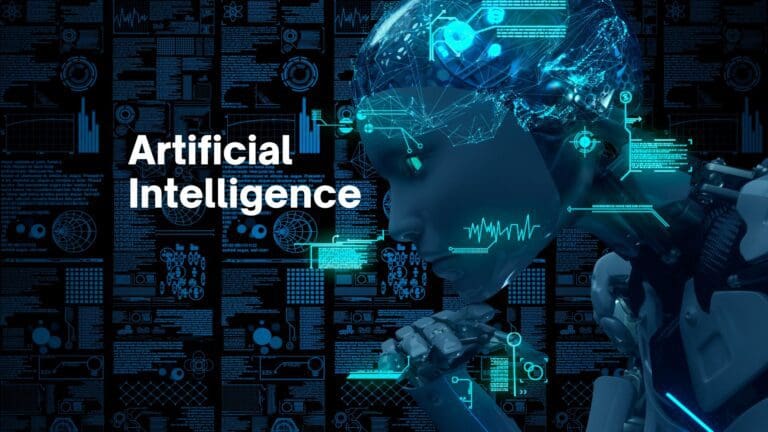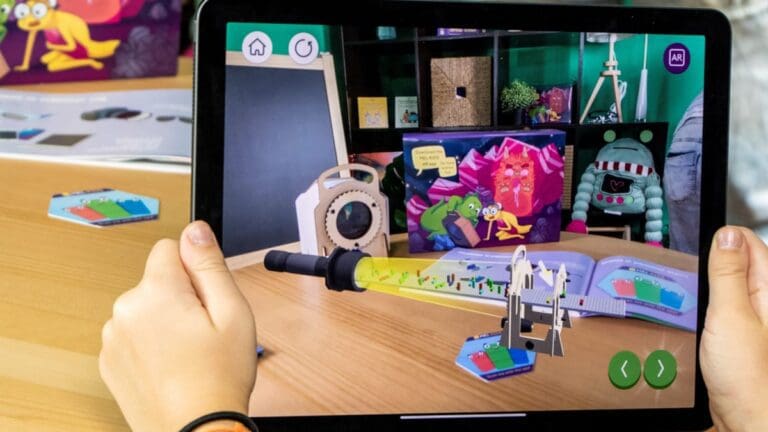AI for Everyone: A Comprehensive Beginner’s Guide to Exploring Artificial Intelligence
Welcome, AI enthusiast! Today we’re diving into the world of Artificial Intelligence (AI). Picture this: you’re surfing the Internet, and the website you visit suggests products eerily similar to your taste. Coincidence? Nope, that’s AI at work. But what is AI in computer terms? Buckle up as we’re about to embark on an exhilarating journey into AI.
AI, More Than a Buzzword
Artificial Intelligence, known commonly as AI, is a domain that allows computers to mimic human intelligence. But let’s tone down the technical jargon a bit. When we delve into the question of “what is AI in simple words?” we’re essentially discussing the development of computer systems capable of performing tasks that would generally require human intelligence. These tasks include understanding natural language, recognizing patterns, solving problems, and making decisions.
If you’re imagining talking robots or sentient machines, hold on! AI isn’t always as sci-fi as it appears. Consider your virtual assistant – Siri, Alexa, or Google Assistant. The magic behind their understanding and responding to your voice commands is AI. But it’s more than just about asking Siri to play your favorite song or asking Alexa about the weather. AI has far-reaching implications and applications in diverse fields – from healthcare to finance, from education to retail, and even in space exploration. Yes, you heard it right – AI is reaching for the stars (quite literally)!
- Unveiling AI: The Magic Behind the Screen
When we think of AI, it’s easy to imagine advanced robots or futuristic technologies. But the truth is AI has integrated into our daily lives far more subtly and significantly. Your personalized social media feeds, your recommended songs on Spotify, and the seemingly psychic auto-complete feature on Google – are all shining examples of AI at work. But to truly comprehend AI, to know what does AI do?, we need to dive a bit deeper into what is AI technology?
AI technology is essentially the development of computer systems that can imitate human intelligence. This includes learning (the acquisition of information and rules for using the information), reasoning (using the rules to reach approximate or definite conclusions), and self-correction.
Now, here’s the kicker – all this happens without any human intervention! Picture a computer system, continually learning and improving all by itself – that’s the magic of AI. However, to navigate this magical landscape, it’s essential to understand what is artificial intelligence definition.
Artificial intelligence, as the term suggests, refers to the intelligence exhibited by machines, a stark contrast to the natural intelligence displayed by humans and animals. However, the question may arise – what is AI artificial intelligence? Well, it’s simply another way of referring to AI, emphasizing the ‘artificial’ or non-human nature of intelligence.
So, we come back to the question – what is the meaning of artificial intelligence? The answer is simple yet profound. It’s about creating intelligent machines that can think, learn, and adapt like humans. However, remember, AI is not about replacing humans; it’s about augmenting human abilities, making life easier, and opening up new possibilities. It’s about creating a better, smarter, and more efficient world.
- Your First AI: Is It Doable?
If you’re wondering, “Can I run AI on my own computer?” let me assure you – the answer is a resounding YES! You can indeed build an AI on your own. And guess what? It’s not as daunting as it sounds. We’ll delve into the details of how to use AI in a later section, but for now, let’s dispel the myth that AI is reserved for tech wizards and Silicon Valley prodigies. AI is for everyone.
But how do you get started? And more importantly, can you make an AI without having to grapple with complex programming languages or shelling out a ton of money? Yes, and yes! There’s a plethora of AI tools and libraries available that cater to different skill levels, and many of them are absolutely free.
AI and Coding: Do You Need to Be a Coder?
Does AI require coding? That’s a common question we hear from AI beginners, and rightfully so. With all the buzz around AI, it can be intimidating to dive into this field without a strong coding background.
Well, here’s the good news – while coding can definitely be an asset when dealing with more complex AI applications, you don’t necessarily need to be a coding genius to get started with AI. Many platforms and tools allow you to dabble in AI without writing a single line of code.
However, having said that, if you do wish to delve deeper into the world of AI, learning a programming language, such as Python, is beneficial. Python is simple yet powerful, making it a favorite among many AI enthusiasts. But what if coding sounds like rocket science to you? Don’t fret. Many tools allow you to dabble in AI without writing a single line of code! So yes, you can learn AI without coding.
Exploring the AI Landscape: Google AI and C3 AI
Now, a bit of fun trivia: Google, one of the forerunners in AI technology, offers various AI tools that don’t require you to be a coding wizard. So, what is Google AI? It’s a suite of tools that help developers build, run, and manage applications infused with AI capabilities.
Another exciting platform is C3 AI. Wondering what is C3 AI? It’s a leading enterprise AI software provider for accelerating digital transformation. And what does C3 AI do? Their platform and applications speed up the development, deployment, and operation of the next generation of AI applications.
AI Learning Path for Beginners: Your Roadmap to Success
So, you’re all fired up to start your journey into the world of AI, but you’re not sure where to start. No worries, we’ve got you covered. Here’s a step-by-step guide on how to use AI for absolute beginners:
- Start with the basics: Understand what exactly AI is and its various subfields like Machine Learning and Deep Learning. This step will help you gain a solid foundation.
- Learn Python: This isn’t mandatory, but Python is relatively easy to learn and widely used in AI. Plus, coding can be fun!
- Get hands-on: Try using AI tools. There are several free tools available to help you understand how to use artificial intelligence.
- Work on projects: Apply what you’ve learned. This could be anything from creating a movie recommendation system to detecting spam emails. It’s time to unleash your creativity!
- Never stop learning: AI is constantly evolving. Stay curious, keep exploring, and don’t hesitate to learn from others in the field.
- The Journey of AI Learning: Challenges and Fun
Now, a word of caution. Is AI hard to study? It can be challenging, but remember; every expert was once a beginner. And the challenges are part of the fun! They help you grow and keep things exciting. Think of it this way: conquering AI is like conquering a game, with each level bringing new adventures and challenges. And the satisfaction of leveling up? Priceless!
AI for the Curious Mind: Harnessing the Power of AI
Perhaps you’re wondering, “what does AI look like?” Or, more specifically, “what does AI look like in my life?” Here’s the interesting thing – AI might not look like anything in particular. It doesn’t always come as a physical device or a visible program. It’s often working behind the scenes, improving your user experience, optimizing processes, or making systems smarter.
The question, then, is not about how AI looks but rather how it works and how you can use it. Curiosity may have killed the cat, but it certainly fuels the AI enthusiast. So how can I use AI? How can it benefit you or the work you do? This is where the rubber meets the road.
From recommending your next binge-worthy series on Netflix to mapping your best route to work on Google Maps to helping doctors diagnose diseases more accurately – the potential of AI is massive. It can help automate tasks, improve accuracy, make predictions, and even help in decision-making.
No Prior Experience: No Problem!
If you’re starting from scratch and asking, “How do I get into AI with no experience?” you’re not alone. It might seem daunting, but it’s definitely achievable. The secret? Continuous learning and practice. You don’t need a fancy degree to start; there are numerous online resources and communities available to help you along the way. So take that leap of faith, and welcome to the exciting world of AI!
What is My AI? Making AI Your Own
Wondering, “what is my AI?” Well, it’s whatever you make of it. Whether you want to build an AI that can compose music, a system that predicts stock market trends, or a program that helps diagnose diseases, the possibilities are endless. With AI, you’re only limited by your imagination.
Conclusion: Embrace AI, Embrace the Future
As we wrap up this guide, it’s important to remember that AI is more than just a technological advancement. It’s a tool that can transform our lives, businesses, and society at large. What the AI revolution brings is an opportunity to drive innovation and create a better future.
So, whether you’re an aspiring AI developer, a business owner looking to leverage AI or just a curious mind, we hope this guide has sparked your interest and equipped you with the knowledge to dive into the world of AI. Remember, the journey of AI is not a sprint but a marathon. It might seem challenging at times, but the rewards are worth it.
So, what are you waiting for? The AI world is your oyster. Go on, explore, create, and, most importantly, have fun. After all, the best way to predict the future is to create it!
Stay curious, keep learning, and remember: the future is AI.
With this guide, you’ve gained a basic understanding of AI and equipped yourself with the knowledge of its practical applications and the steps to start learning AI. But remember, this is just the beginning. AI is a vast field with an ocean of possibilities to explore. So stay curious, keep learning, and make AI your own!
Welcome to your AI journey. Enjoy the ride!

